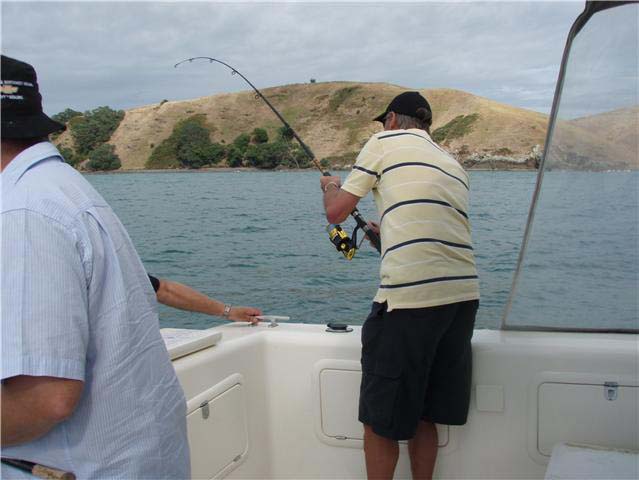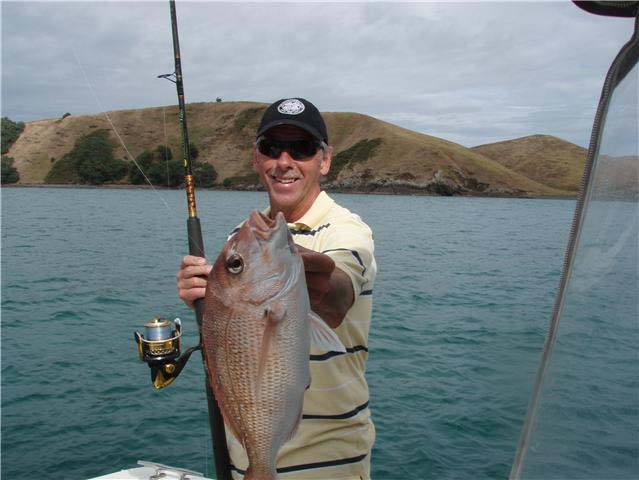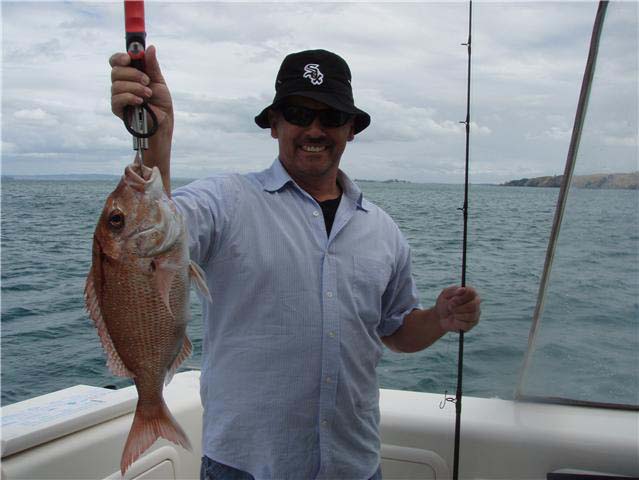

Catch Fish with
Mike Ladle
Information Page
SEA FISHING
For anyone unfamiliar with the site always check the FRESHWATER, SALTWATER and TACK-TICS pages. The Saltwater page now extends back as a record of over several years of (mostly) sea fishing and may be a useful guide as to when to fish. The Freshwater stuff is also up to date now. I keep adding to both. These pages are effectively my diary and the latest will usually be about fishing in the previous day or two. As you see I also add the odd piece from my friends and correspondents if I've not been doing much. The Tactics pages which are chiefly 'how I do it' plus a bit of science are also updated regularly and (I think) worth a read (the earlier ones are mostly tackle and 'how to do it' stuff).
A bit more from down under!
I've had a quick (and fruitless) dabble after a bass. So nothing to report from me at the moment but hopefully that will change soon. It's probably just as well because I've a lot of work to do at the moment and it might interefere with the fishing. Fortunately my pal Alan, down in New Zealand is still catching a few fish so here's his latest account.
Hi Mike,
Tuesday 23 March 2010
When I left the back door to collect the paper on Tuesday morning my spirits rose as there was not a breath of wind at the back of the house. However, the elation was to be short lived as I reached the front garden to be met with a fresh warm blast in the face from the NW. Wind from this quarter would cause problems as it would be gusting directly into the area that we fished so successfully last week. We’d be limited in where we could go today. The sky was overcast and it looked like we were in for a day of hot sun mixed with dull cloudy spells.
On arriving at the marina the wind was puffing merrily and Bruce and Peter were deep in conversation as to where best to fish. Bruce had a couple of cunning plans which involved fishing with bait. He had already arranged stacks of frozen pilchards and small squid on the bait board and was ready to rumble. The other anglers arrived promptly at 8.30 am and we steamed out of the marina in short order.
First stop was in the lee of Motutapu island. Peter found a calm spot and cut the motors which allowed us to drift sedately with the current along the shore. I attached a Zoom White Ice on a ˝ oz jig head, to snorts of derision from the ardent bait soakers, and dropped the lure to the bottom. It bounced twice and promptly got snaffled by a respectable snapper. The fish dragged line from the reel in very short bursts but at 35 cm it was not large enough to pull vast swathes of line from the spool against 2 kilograms of drag and a brutally powerful soft bait rod. That silenced the critics but it did not take long for them to regain their confidence and start making cocky comparisons as a steady procession of, mostly undersized, snapper made their way to the stern only to be quickly released back to their briny haven. The wind started to get up soon after so the decision was made to anchor. This did not affect the catch rate of the bait fishermen but it spelled the death knell for soft plastic. We persevered for around 1 ˝ hours fishing at anchor amongst the gusty squalls before Peter decided to move as we had managed to only add four fish to the bin.
While we motored to the next spot I attached an Eddystone eel directly to the trace using a Palomar knot 18” above the Zoom White Ice to see whether it would make a difference to the soft plastic catch rate at anchor. En route to the mark Peter found a school of feeding kahawai so he cut the motor and we drifted towards them. Unfortunately they sounded well before we reached the area where they had been feeding but there were snapper below and they nailed the baits as soon as they hit the sea floor. I was getting nibbles as well and all of a sudden the rod tip wrenched down and line started to exit the spool as a 36 cm snapper switched on the power. I played the fish carefully as I was concerned that the trace could break at the Palomar knot. Eventually the fish came boat side and was added to the slim pickings in the fish bin. We drifted around the spot for a while and eventually ended up anchoring. I managed to land another three fish on the Eddystone eel but only one was legal (mirror image of the first snapper). The Eddystone eel proved to be much less selective than the Zoom soft plastics but did work in a fashion from the anchored boat. The bait fisherman were continuing to catch fish regularly but most were undersized. One has to question whether it is worth fishing with bait when most of the fish caught are not takeable. The damage caused to small fish which are roughly horsed to the surface and tossed back must be substantial and I quietly wonder just how many end up surviving. It would be worth increasing the size of hook and bait to ensure that less small fish are hooked.
Eventually the action slowed so we motored over to a calm spot dropped the anchor and prepared lunch. Standard fare – roast chicken, crusty bread, salads, pesto, dips and smoked salmon followed by a fresh fruit platter and a cheeseboard. Washed down with an ice cold ale or wine.
(NZ is the ultimate for grub isn't it? ML)The score at lunch time was nine fish kept. Six were caught on bait (including the largest of ~ 43 cm) and three on soft plastic. Five fishermen on bait and one on soft plastic.
After lunch we anchored up on the edge of a steeply sloping shelf in the lee of Rakino island and this session only resulted in a couple of 35 cm fish to the bait fishermen who were getting more raucous in their criticism of soft plastics as their blood alcohol level climbed. I managed to get busted off as a larger fish took the Eddystone eel and I struck too hard causing the line to part at the Palomar knot. I’ve subsequently read that the trace needs to be a minimum of 10 kilogram, preferably 15 kilogram, if a second soft plastic is to be added in this fashion. Note that I tried Sassy shads and numerous other types of soft plastic but nothing was consistently successful in enticing the snapper to bite. Bruce Duncan recommended trialling 'Gulp'! and fishing it out wide. He likes to cast well out from the side of the boat and allow the lure to drift in a wide arc to the rear of the boat occasionally twitching it and winding up the slack. This approach was virtually impossible under the prevailing conditions as the large amount of free line simply billowed in the wind which made it difficult to feel bites and set the hook.
By now the time had reached 4.10 pm so it was time to make our way home. Peter pulled up the anchor and confirmed that we only had time for one more brief session in the Motuihe channel. It took 30 minutes to get to the chosen spot and five minutes to locate a pod of fish and position the boat correctly under anchor. As soon as the bow of the boat set into the breeze five baits and a solitary soft plastic were lobbed into the current. It was only 8 metres deep under the boat at this point. My Zoom lure was spanked on the drop and as I came up tight I felt the weight of an excellent fish. This fish steamed off angrily but proceeded to spit the hook just as I settled in for the battle. I reeled in the lure, checked it and then dropped it to the bottom only for the same thing to happen...four times. Meanwhile at the back of the boat there was mayhem. Every bait had been monstered and all of the fishermen were pinned to the transom with rods bent in tight arcs. One by one they wrestled snapper to the surface and all were solid 3 – 7 lb fish. The, by now, inevitable questions regarding the success rate of the sole soft plastic fisherman rained down and these intensified as most of them hooked up again immediately on the second drop.
I figured that I was pulling the lure out of the fishes mouth on the strike so went well forward to the bow to get a better drift. First drop and the lure got absolutely monstered mid-water by a behemoth. It charged off under the boat into the current and the force exhibited was so intense that I got pinned against the bow rail. The rod was bent in a tight arc around the side of the boat and the tip was beating a tattoo on the surface of the water. The first run was brutal in its ferocity and power but the second run signalled that the fish had selected a much higher gear. Line poured from the squealing spool against the 2 kilograms of drag like the reel was in free spool. I was struggling to keep my balance and had no control at all. Unfortunately I could not follow the fish as the anchor was in the way. Suddenly I felt the line rub against something underwater and it snapped instantly. I reeled in slowly to see that the line had broken cleanly, well above the trace. I was fishing with 14 lb braid and have never been broken off so comprehensively before. It had all the hallmarks of an XOS snapper or kingfish. One of the bait fishermen witnessed the short battle and was impressed enough to mutter “that was some fish” before reminding me that I had yet to land anything on soft plastic. B*st*rd! Then as soon the bite had started it stopped. In 20 minutes they had landed six large snapper and two 2 ˝ lb kahawai. Magnificent sport.
All in all it was an awesome day on the water. We are off out again on Monday, weather permitting, and I’ll be trying out a few other soft plastic techniques if we end up being anchored. I will keep you posted.
Tight lines and best wishes,
Alan Bulmer
How about that! It was worth reading just for the description of the meal. A bit different from the flask of undrinkable coffee and (if I was lucky) tinned tuna sandwich on my boat trips.
Whoa!

Success.

Another.
